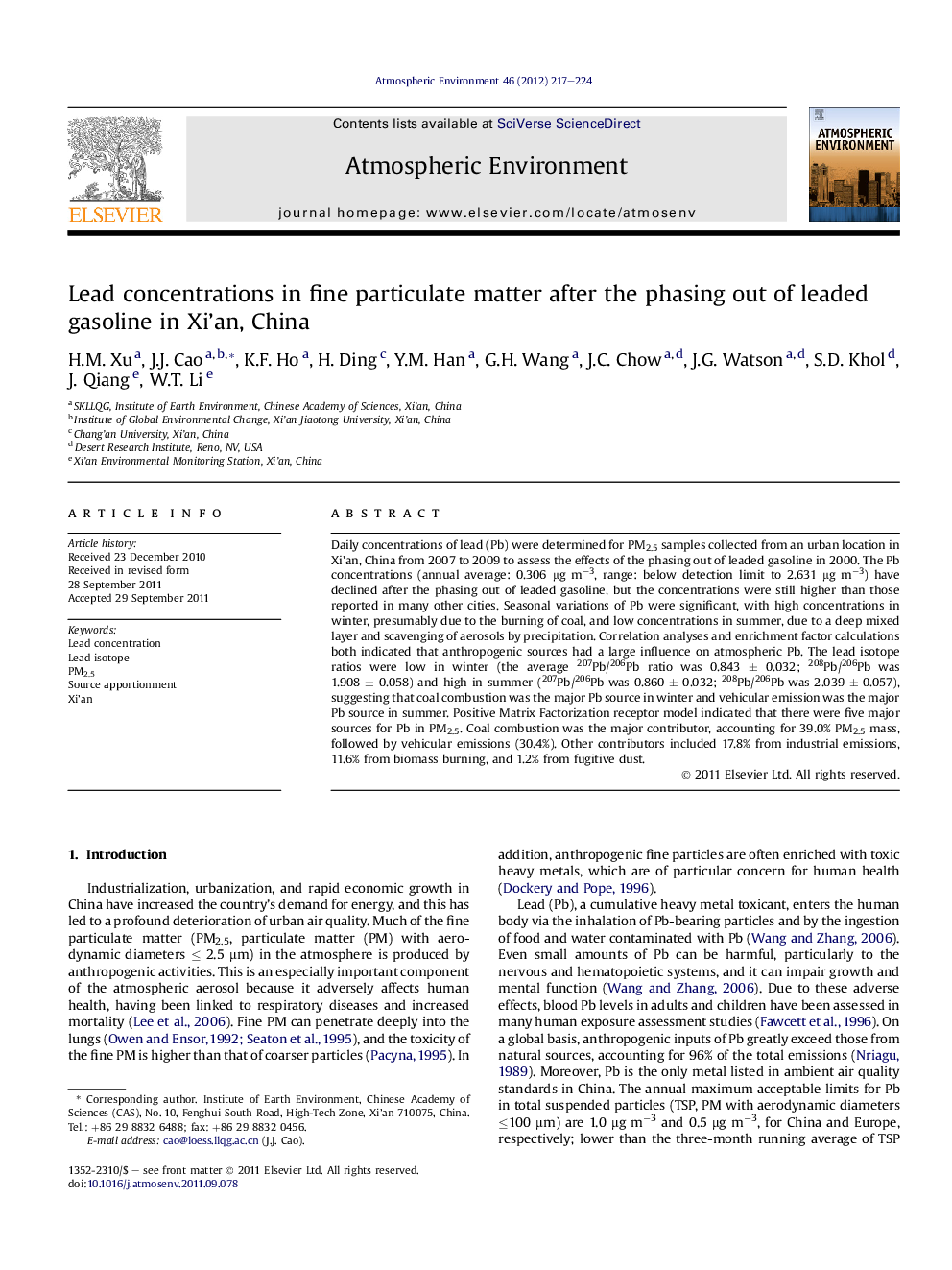| Article ID | Journal | Published Year | Pages | File Type |
|---|---|---|---|---|
| 4439256 | Atmospheric Environment | 2012 | 8 Pages |
Daily concentrations of lead (Pb) were determined for PM2.5 samples collected from an urban location in Xi’an, China from 2007 to 2009 to assess the effects of the phasing out of leaded gasoline in 2000. The Pb concentrations (annual average: 0.306 μg m−3, range: below detection limit to 2.631 μg m−3) have declined after the phasing out of leaded gasoline, but the concentrations were still higher than those reported in many other cities. Seasonal variations of Pb were significant, with high concentrations in winter, presumably due to the burning of coal, and low concentrations in summer, due to a deep mixed layer and scavenging of aerosols by precipitation. Correlation analyses and enrichment factor calculations both indicated that anthropogenic sources had a large influence on atmospheric Pb. The lead isotope ratios were low in winter (the average 207Pb/206Pb ratio was 0.843 ± 0.032; 208Pb/206Pb was 1.908 ± 0.058) and high in summer (207Pb/206Pb was 0.860 ± 0.032; 208Pb/206Pb was 2.039 ± 0.057), suggesting that coal combustion was the major Pb source in winter and vehicular emission was the major Pb source in summer. Positive Matrix Factorization receptor model indicated that there were five major sources for Pb in PM2.5. Coal combustion was the major contributor, accounting for 39.0% PM2.5 mass, followed by vehicular emissions (30.4%). Other contributors included 17.8% from industrial emissions, 11.6% from biomass burning, and 1.2% from fugitive dust.
► Pb concentrations (average: 0.306 μg m−3 during 2007–2009) have declined after the phasing out of leaded gasoline. ► Pb concentrations in Xi’an are still higher than those reported in many other cities. ► Coal combustion was the strongest source for PM2.5 Mass (39.0%).
